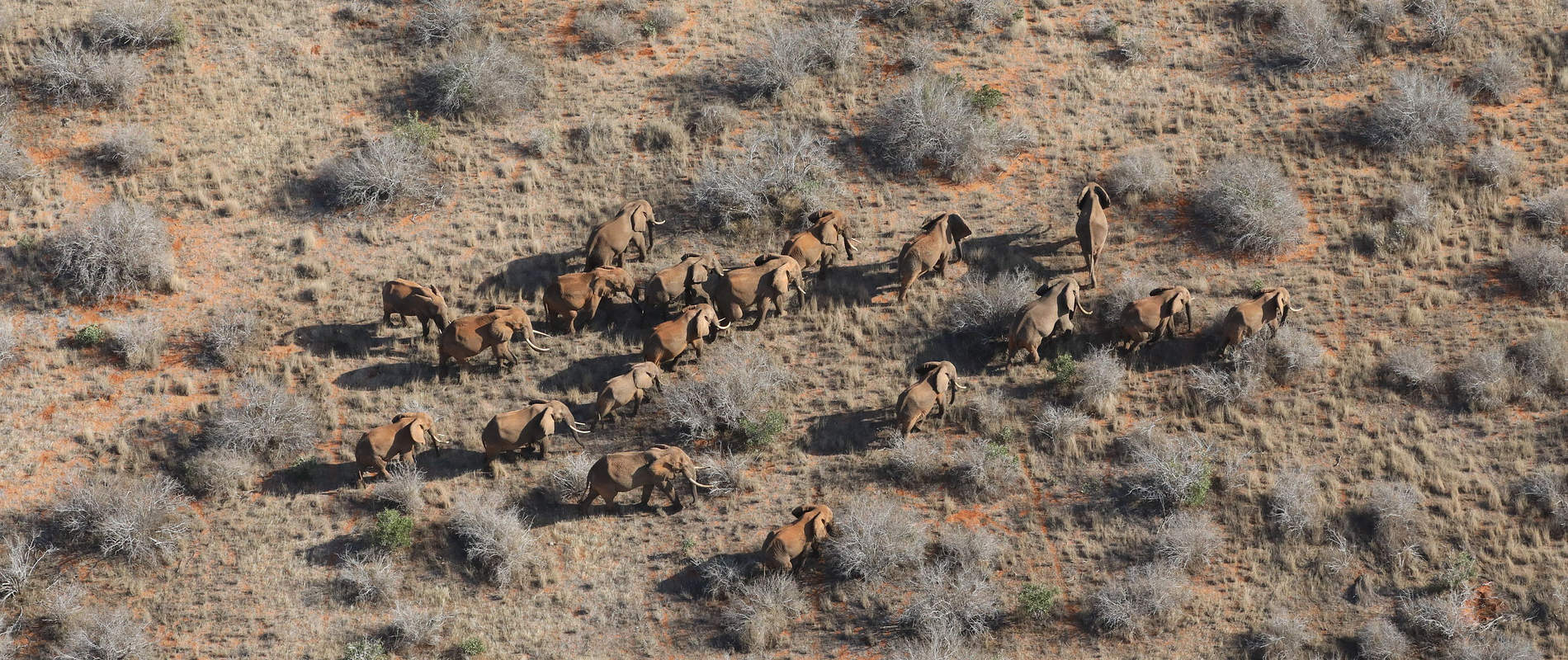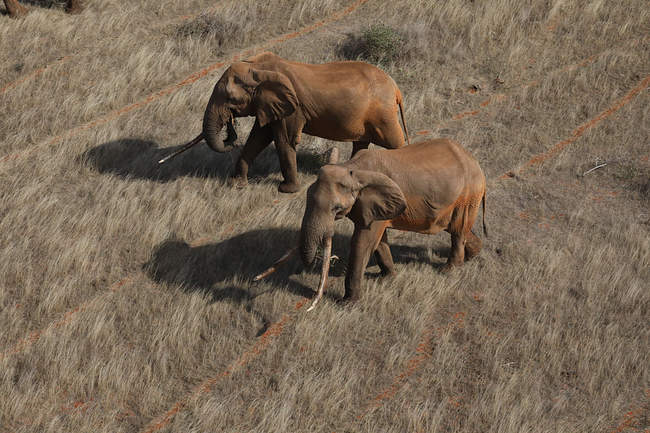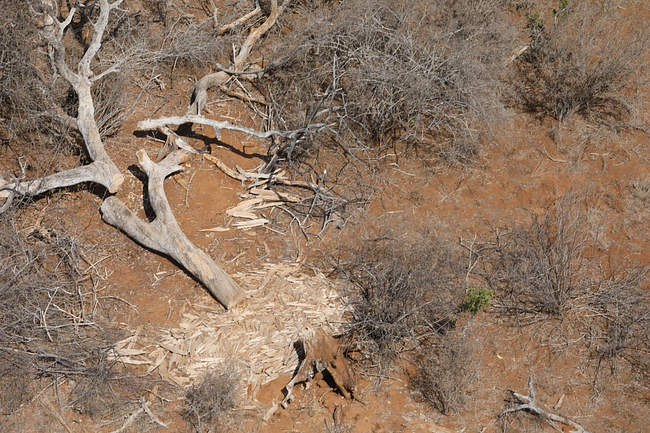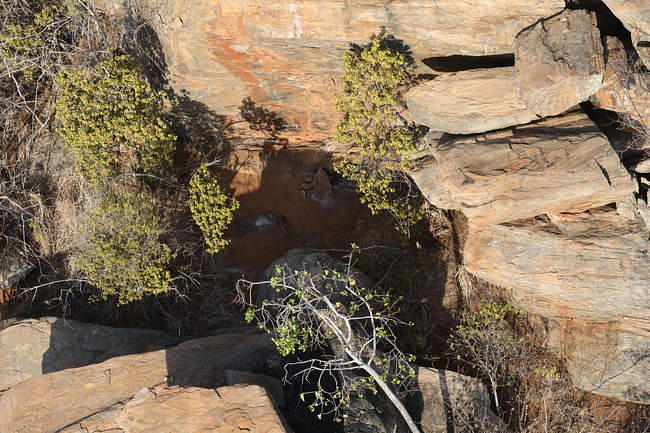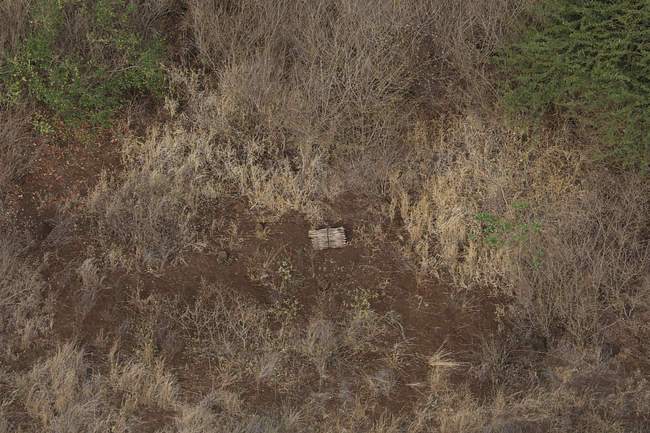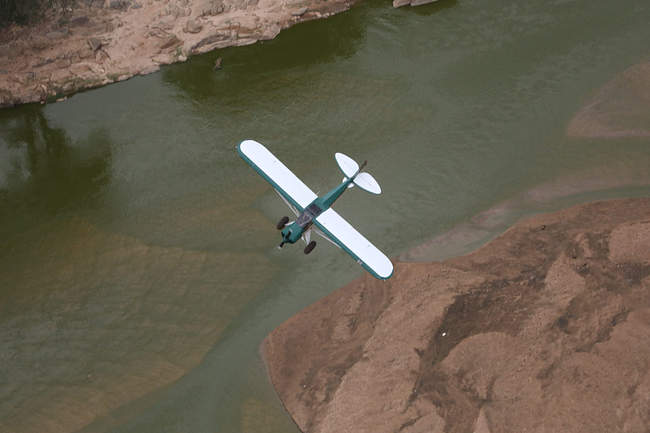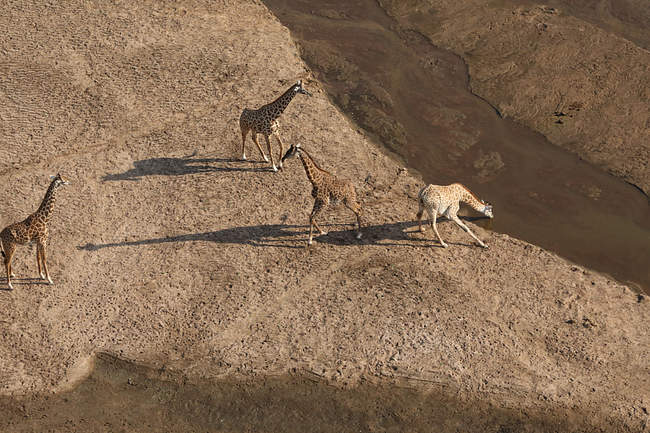August was another busy month - our ground teams made almost daily discoveries of snares, poachers' harbours and signs of human activity. We concentrated activities of our Aerial Units in the same areas, making several additional discoveries and creating a greater deterrent to poachers.
In the Northern area of Tsavo East NP, several bicycle tracks were followed deep into the Park by SWT fixed-wing aircraft. A follow-up helicopter patrol uncovered an active poachers’ camp. Unfortunately, the area was thickly forested, and the helicopter was unable to land, so two men who were inhabiting the small camp were able to escape. However, two bicycles, machetes, hunting torches (flashlights) and cooking pots were later confiscated from the camp. Although not the ultimate outcome, major confiscations like this go a long way to disrupting poachers’ activities.

An additional 3 harbours in the Chyulu Hills National Park and 1 harbour in the Gazi area of Tsavo East were discovered and a charcoal kiln and poacher’s tracks were found in each of the locations. To the East of Tsavo East National Park, 1 possible poachers’ camp was found on Kulalu Ranch, coordinates of which were provided to KWS for follow up. From the air, it was unclear if this camp belonged to charcoal burners or poachers since there is a lot of human activity in this area; however, there were no nearby charcoal kilns, so it was suspected to be the latter.
The steady decrease in livestock incursions into protect areas, due to persistent pressure by KWS on herders, as well as our own consistent aerial coverage, has been encouraging to see. Tsavo East is relatively livestock free, with only a few small, difficult-to-reach areas being affected. However, there are huge tracts of the Park that at this time of year have historically been literally inundated with cattle and human settlements, which is no longer the case.
There was, however, an increase in livestock presence in Chyulu Hills National Park over previous months, notably of sheep on the grassy slopes near the top of the hills. With the sheep herders have come some of the worst bushfires experience in the Chyulus in recent years. Although the majority of firefighting was done from the ground, in August the SWT helicopter was used during two days of intense operations comprising a combination of Bambi Bucket water drops and ferry flights to drop rangers into strategic positions to attack the fires on the ground. Since most of the affected areas were grassland, these efforts were focused on places where the cloud forest and/or dry deciduous forest below were threatened.
There was a definite increase in charcoal activity, particularly in Chyulu Hills NP, Gazi and Mukomwe. In the first two areas, a small number of either charcoal kilns or cut trees being prepared for charcoal were sighted and later destroyed by ground teams. In Mukomwe, a large-scale charcoal burning operation that had been stopped over a year prior was discovered on a routine aerial patrol. Three additional patrols were conducted, in conjunction with ground teams, to destroy several camps, dozens of charcoal kilns, and hundreds of sacks of charcoal.
As had been previously reported in July, we spent many hours searching for an elephant with a snare around her neck and ear on Kulalu/Galana. Fortunately, she finally showed up again in August, and with support from the SWT helicopter, the KWS/SWT Vet was able to treat her and give her a good prognosis for recovery. Another elephant in the Northern area was found, after an SWT ground team followed a blood trail, with two arrow wounds. Once eyes were on the injured elephant, the same KWS Vet was collected from Voi and again, with helicopter assistance to aid the darting of the patient, a successful treatment was carried out.

Only one elephant carcass was discovered from the air during August, that of an old female elephant. Due to the presence of intact ivory, and the age of the elephant, it is assumed to have died of natural causes. A second carcass, first sighted by Wildlife Works on Rukinga Ranch, was observed during a search for a suspected orphan elephant that had been sighted by a filmmaker nearby. The orphan was not located on that day, however, two weeks later, it reappeared nearly 30 kilometres away during a routine aerial patrol by Wildlife Works pilot, Keith Hellyer. With a concerted effort between Wildlife Works rangers, SWT rangers, the SWT helicopter and elephant Keepers, the young, 2-year-old calf was successfully rescued and is now being cared for at the Voi Reintegration Unit.
Read our full monthly report below for more details of our Aerial operations in August 2019.
